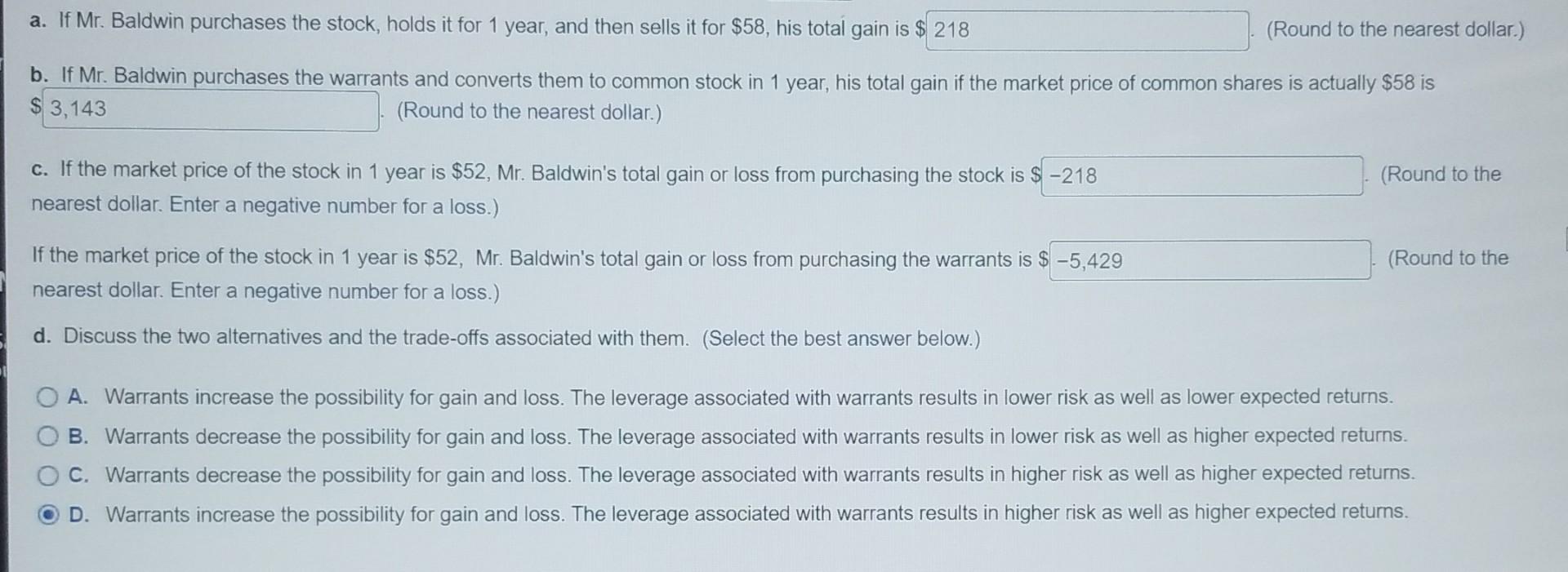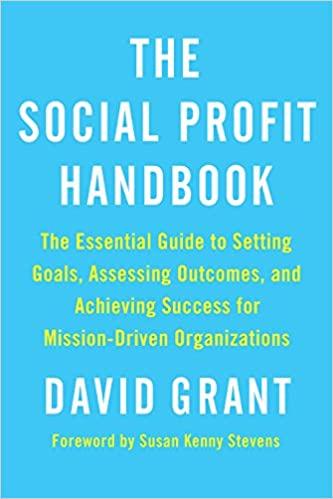Answered step by step
Verified Expert Solution
Question
1 Approved Answer
Common stock versus warrant investment Personal Finance Problem Tom Baldwin can invest $4,000 in the common stock or the warrants of Lexington Life nsurance. The


Common stock versus warrant investment Personal Finance Problem Tom Baldwin can invest $4,000 in the common stock or the warrants of Lexington Life nsurance. The common stock is currently selling for $55 per share. Its warrants, which provide for the purchase of 5 shares of common stock at $53 per share, are currently selling for $14. The stock is expected to rise to a market price of $58 within the next year, so the expected theoretical value of a warrant over the next year is 525. The expiration date of the warrant is one year from the present. a. If Mr. Baldwin purchases the stock, holds it for one year, and then sells it for $58, what is his total gain? (Ignore brokerage fees and taxes.) b. If Mr. Baldwin purchases the warrants and converts them to common stock in 1 year, what is his total gain if the market price of common shares is actually $58? (Ignor brokerage fees and taxes.) c. Repeat parts a and b, assuming that the market price of the stock in one year is $52. d. Discuss the two alternatives and the trade-offs associated with them. a. If Mr. Baldwin purchases the stock, holds it for 1 year, and then sells it for $58, his total gain is $ 218 (Round to the nearest dollar.) b. If Mr. Baldwin purchases the warrants and converts them to common stock in 1 year, his total gain if the market price of common shares is actually $58 is $ 3,143 (Round to the nearest dollar.) C. If the market price of the stock in 1 year is $52, Mr. Baldwin's total gain or loss from purchasing the stock is $ -218 nearest dollar. Enter a negative number for a loss.) (Round to the (Round to the If the market price of the stock in 1 year is $52, Mr. Baldwin's total gain or loss from purchasing the warrants is $ -5,429 nearest dollar. Enter a negative number for a loss.) d. Discuss the two alternatives and the trade-offs associated with them. (Select the best answer below.) A. Warrants increase the possibility for gain and loss. The leverage associated with warrants results in lower risk as well as lower expected returns. B. Warrants decrease the possibility for gain and loss. The leverage associated with warrants results in lower risk as well as higher expected returns. C. Warrants decrease the possibility for gain and loss. The leverage associated with warrants results in higher risk as well as higher expected returns. D. Warrants increase the possibility for gain and loss. The leverage associated with warrants results in higher risk as well as higher expected returns
Step by Step Solution
There are 3 Steps involved in it
Step: 1

Get Instant Access to Expert-Tailored Solutions
See step-by-step solutions with expert insights and AI powered tools for academic success
Step: 2

Step: 3

Ace Your Homework with AI
Get the answers you need in no time with our AI-driven, step-by-step assistance
Get Started


